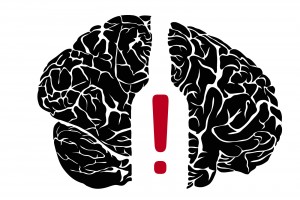A new study from France documented dementia from excessive alcohol abuse. One million patients who needed admission to hospitals in France for early dementia took part in that study. Dementia is a clinical syndrome, where the cognitive ability deteriorates progressively.
The study from France regarding dementia from excessive alcohol abuse
According to the French National Hospital Discharge database it was especially relevant that alcohol use disorders were present in 16.5% of the men and 4% of the women with dementia. Those who did not have the diagnosis of dementia had only half the amount of alcohol abuse disorders in both sexes.
There are other diseases that can lead to dementia like Parkinson’s disease and Huntington’s disease. These cases were not part of this study.
The association with alcohol abuse was particularly evident in early dementia cases at an age below 65.
Furthermore, alcoholics also have a shorter life expectancy.
Several mechanisms responsible for dementia development
Alcohol can cause dementia in several ways.
- First of all, alcohol and the metabolic by-product acetaldehyde have toxic effects on the brain. They cause long-term toxic effects and functional brain damage is the result.
- Furthermore, heavy alcohol abuse leads to liver damage with resulting changes in metabolism. Ammonia production from the cirrhotic liver causes brain damage in a condition called hepatic encephalopathy.
- In addition, heavy drinking is a strong vascular risk factor. This leads to diabetes, high blood pressure, heart attacks and strokes.
- Often it is the population group that is uneducated, people who smoke and people with depression who suffer from the effects of alcohol abuse.
- Finally, heavy drinking is more frequent in men than in women. In men the dementia risk was 4.7-fold, in women 4.3-fold.
- Obesity, smoking and high blood pressure are also risk factors for dementia. If these cases were not part of the study, heavy alcohol abuse caused an increase in dementia in both sexes by a factor of 3-fold.
Possible biases of the study
Dr. Kostas Lyketsos, a neuropsychiatry professor and director of the John Hopkins Memory and Alzheimer’s Treatment Center did not take part in the study and its investigation. A non- biased observer, Dr. Kostas Lyketsos stated that there is a problem with precision of the data the larger the study population is. In this case there were more than 1 million participants, so a number of biases can influence the outcome of the study. For instance, one problem is that these patients with mild cognitive impairment were inpatients in a hospital. Normally such patients would not be in a hospital. Another fact was that none of the participants had received questionnaires of the amount of alcoholic drinks they consumed, and as a result it is difficult to knows exactly how high the amount of alcohol was that caused the damage to the brain.
Country bias
The large sample size was from only one country, France. This means that we do not know whether there would be ethnic differences between countries. Nevertheless the findings of this study are important. In a 2014 review by the WHO the average person in France consumed 12.2 liters of pure alcohol per year. In contrast the average person in the US consumed only 9.2 liters of pure alcohol in this year. Apart from these concerns it is important to realize that alcohol has toxic effects on the brain. This can also result in dementia.
Other studies regarding alcohol abuse and dementia
The media has praised alcohol for preventing heart attacks. On the other hand, there are other articles in which we hear about alcoholic hepatitis and liver cirrhosis, both of which can be killer diseases. To get some clarification, let us examine the various facts.
Dr. Finnel mentioned that 7.9% of all emergency room visits in the US are due conditions which have an association to alcohol(Ref.1). When the causes of deaths that are a consequence to alcohol are listed, they are: cancer of the mouth and pharynx, alcohol abuse disorders, coronary heart disease causing heart attacks, cirrhosis of the liver, traffic accidents, poisonings, falls and intentional injuries. You don’t get that from the news. Instead you read about the one glass of red wine per day that is good for women and up to two glasses of red wine that is good for men to prevent heart attacks and strokes.
Bioflavonoids
It is the bioflavonoids and among those in particular resveratrol, that are the active ingredient responsible for heart health.
Resveratrol is a powerful antioxidant that protects against ischemia-reperfusion injuries. It is responsible for the cardio protective properties of red wine known as the “French paradox” (Ref.2). According to this reference resveratrol contributes to at least 3 processes that stabilize the metabolism.
Toxicity of alcohol
According to the WHO 5.9% of all deaths worldwide is a consequence of alcohol overconsumption. In 2012 the WHO recorded that 7.6% of deaths in males, but only 4% of female deaths were due to alcohol. Toxicity comes from the breakdown product acetaldehyde, which all cells can convert from alcohol. Liver cells are especially able to do that. According to Ref. 3 alcohol diffuses easily through all of the cell membranes and reaches every organ in the body. The toxicity of acetaldehyde is shutting down the mitochondria, which affects the energy metabolism and causes cell death. The immune system reacts with inflammation, when it attempts to repair the damage.
So, what are the major damages which alcohol can cause? First there is fat accumulation (steatosis), next chronic inflammation followed by necrosis (dying of cells) and finally fibrosis. An example of fibrosis is liver cirrhosis, where non-functioning connective tissue replaces liver cells.
Different tissue sensitivity to alcohol
Certain tissues are more susceptible to alcohol toxicity than others. As the concentration of alcohol is highest in tissues that are in direct contact with alcoholic drinks, cancers related to alcohol consumption develop in the oral cavity, pharynx, larynx, esophagus, and in the colon and rectum. The pancreas is particularly vulnerable to inflammation and fibrotic changes with degeneration into cancer of the pancreas. The heart tissue and the arteries are very sensitive to alcohol. Hypertension, heart attacks, stroke, cardiomyopathy and myocarditis as well as irregular heart beats (arrhythmias) can develop. The brain is very sensitive to toxic effects of alcohol as well. This causes major depression, personality changes with violent behavior, car accidents and injuries.
Other toxic effects of alcohol on organs
Kidney disease (alcoholic nephropathy) is another illness due to too much alcohol. Five percent of breast cancers in northern Europe and North America are a direct consequence to the toxic effects of alcohol (Ref.3). Finally, the liver being so active in detoxifying alcohol, will be not functioning and finally develops liver cirrhosis, as described before. This accounts for a lot of premature deaths at a relatively young age (typically in the mid to late 50’s).
Ref. 3 goes on to say that literature exists which claims that 1 to 2 drinks per day would be useful for prevention of heart disease. But the observation of the authors is that people will not discipline themselves to stick to these limits and very quickly enter into the zone of alcohol toxicity. The authors further noted that with regard to causing any kind of cancer there is no safe lower limit; the risk is directly proportional to the amount of alcohol consumed and the risk starts right above the zero point.
The pathologist has the last word
When I studied medicine at the University of Tübingen, Germany I attended lectures in the pathology department where Professor A. Bohle, M.D. demonstrated pathology findings of deceased patients. Dr. Bohle had a special interest in Mallory bodies. These are alcohol inclusion cysts within liver cells that can be stained with a bright red dye.
Histological documentation of toxic effects in livers of corpses
I will never forget when Prof. Bohle pointed out that the livers of this most diverse population, whose bodies we had the privilege as medical students to study, had a rate of 25% positive Mallory bodies. He wanted to impress on us as medical students to watch out for the alcoholics that are usually missed in general practice. Obviously 25% of the pathology population was affected by the consumption of alcohol. It was Prof. Bohle’s hope that we could perhaps interfere on the primary care level before things went out of control. Many of these corpses were the sad results of traffic accidents that could have been prevented. (In 2018 things have changed: seat belts and alcohol limits are standard, in 1968 in Germany they were not).
Alcohol as an aging substance
Consistent use of alcohol on a regular basis will slow down cell metabolism and hormone production significantly. The major effect of alcohol leads to poisoning of the mitochondria in multiple organs, which translates into faster aging and a shortened life expectancy. This in turn results in a change of appearance. An older person who has abused alcohol for a number of years may look 5 to 10 years older than their chronological age.
50% of people above the age of 65 drink daily (Ref.4). Some more statistics: alcohol abuse in elderly men is 4-times higher than in elderly women. 5% to 10% of all dementia cases are related to alcohol abuse. About 15% of older adults are experiencing health risks from abusing alcohol. And about 90% of older adults are using medications. Close to 100% of medications can adversely interact with alcohol (Ref.4).
Social pressure
These are the scientific facts, and then there is social pressure, when you are invited to a party.
When you are young and believe that you are invincible, do you care what the science says? You want to have a “good time” and not worry about consequences. The data about long-term exposure and a slowly increasing cancer risk is there. The wine industry will remind you that 1 drink for women and two drinks for men will protect you from heart attacks. They will withhold the cancer information from you, as they don’t really want to hear about that (yes, it’s bad for their business!).
Resisting social pressure and doing what is good for you
Can you have a good time at a party without drinking alcohol? Yes, you can. You can talk and you can listen; you are probably more with it than those who had too much to drink. I like mineral water and hold on to a glass of that.
I explained in a blog before how I was convinced by three speakers at an A4M conference to join those who abstain from alcohol.
Socializing without alcohol is doable. You may at times miss it, but you can warm up even to a crowd that had a few drinks too much. It is about choice: we can choose what we want out of life.
Conclusion
Alcohol is a cell and nerve poison. The medical need for “one glass of wine for women and two glasses of wine for men to prevent heart attacks and strokes” has been vastly exaggerated. Fact is that resveratrol and other antioxidants like vitamin C and vitamin E can also prevent cardiovascular disease. They are alcohol-free! The risk of dementia development as a long-term result of alcohol exposure is something that is only now getting attention by the medical profession. We live longer these days, and this makes alcohol exposure over the decades a real threat to our mental wellbeing. Consumption of alcohol needs to be re-evaluated by every one of us. What risks are we willing to take? Is the stress-relieving effect of alcohol worth the risk of losing our mind to Alzheimer’s disease? If we care about our future the answer should be clear!
References
Ref. 1: John T. Finnell: “: Alcohol-Related Disease“ Rosen’s Emergency Medicine, Chapter 185, 2378-2394. Saunders 2014.
Ref. 2: “Hurst’s The Heart”, 13th edition, The McGraw-Hill Companies, Inc., 2011. Chapter 54. Coronary Blood Flow and Myocardial Ischemia.
Ref. 3: Ivan Rusyn and Ramon Bataller: “Alcohol and toxicity”, 2013-08-01Z, Volume 59, Issue 2, Pages 387-388; copyright 2013 European Association for the Study of the Liver.
Ref. 4: Tom J. Wachtel and Marsha D. Fretwell: Practical Guide to the Care of the Geriatric Patient, Third Edition, Copyright 2007 by Mosby.








